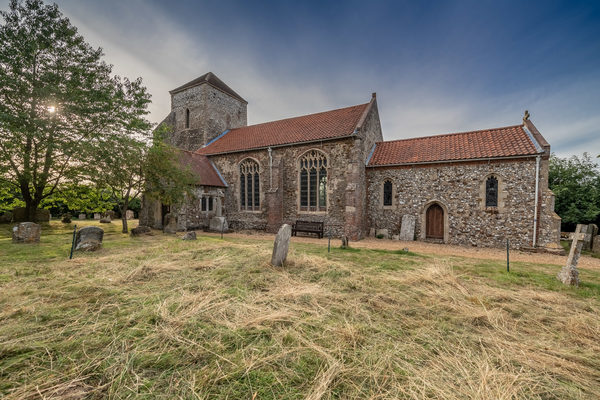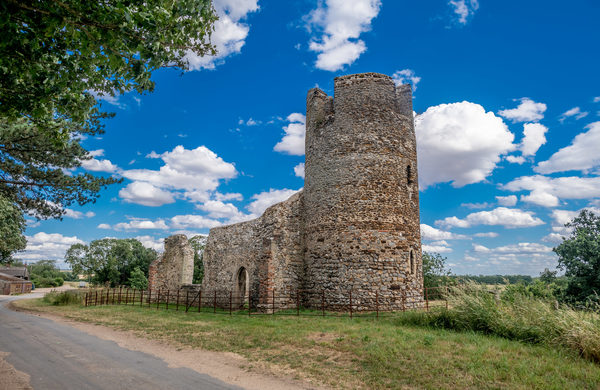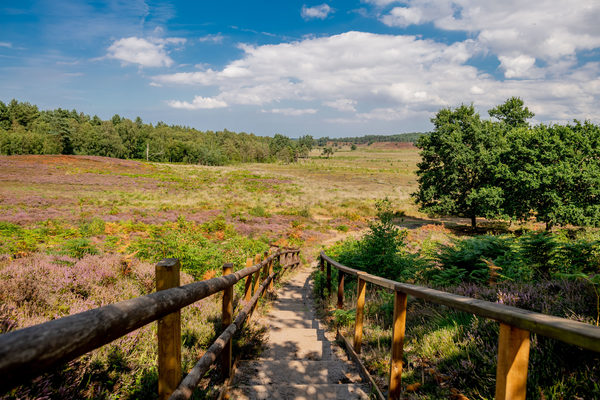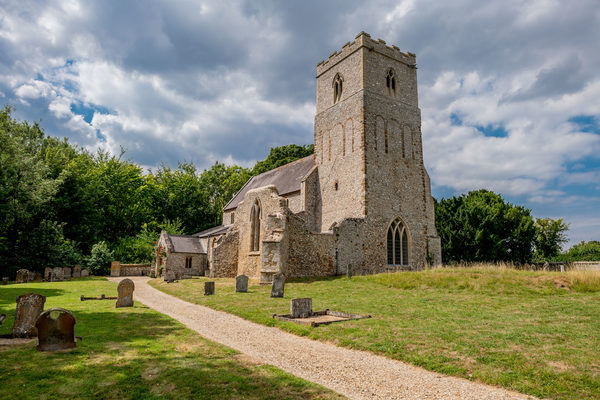At least 15 species of dragonfly frequently occur at Roydon and Grimston, including the rare black darter, for which this is one of only two breeding sites in Norfolk. Rare keeled skimmers have also been seen recently. More than 30 species of butterfly have been seen including white admiral, brown argus, and both green and purple hairstreak. 450 species of moth have been recorded and the impressive minotaur beetle is found. Reptiles, including adder, are present. Numerous rare and interesting plants occur, but perhaps the greatest spectacle occurs in August and early September when the site’s prodigious stands of heather are in flower.
Many birds frequent the common, with nightjars and woodlarks nesting in good numbers. In winter there is usually a small roost of hen harriers and occasional merlin are seen. Barn owls and, occasionally, short-eared owls occur. A great grey shrike is seen during most winters. Flocks of linnets breed on the Common, but are often noticed as feeding flocks on Rising Heath.
Wildlife Highlights:
Black darter dragonfly - In Norfolk, Black darters breed around the Gaywood Valley Living Landscape. Males are easy to identify, being the only black-coloured darter in the country. Females, however, are largely yellow and similar to several other darter species.
Raft Spider - Roydon Common is the only site in East Anglia to host this species, with a small population occurring. This is one of the two largest British spiders, along with the fen raft spider, which occurs at Lopham Fen in Suffolk. They are found in dykes, and specially managed ponds that need to be kept relatively free of plants; the spiders need open water to hunt, as they rely on detecting the ripples caused by their unfortunate prey.
Nightjar - As darkness approaches a strange sound fills the heath – an almost-mechanical mix of reeling, rattling and croaking. These guttural, churring calls belong to one of the UK’s most enigmatic summer visitors: the nocturnal nightjar. Nightjars are odd-looking birds; their plumage is an intricate mix of camouflaged browns, making them virtually impossible to spot while at rest. In flight, they’re an entirely different prospect: long-winged and hawk-like, though with a jerky, flapping action, which brings to mind a giant moth. Several ‘churrers’ can be heard – and sometimes seen – on calm summer evenings. The males can be distinguished by white patches on their wings and tail.
Sundew - Wet, boggy areas of the Common are home to all three British species of sundew: round-leaved, oblong-leaved and great. These carnivorous plants can only extract a limited amount of nutrients from the acidic conditions they live in, so supplement their needs by catching and digesting small insects, which they lure with the sticky, sweet smelling droplets on the end of their hair-covered leaves.








